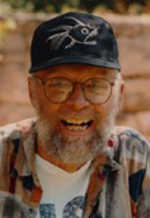Computational Intelligence: Anomaly Detection in Wireless Sensor Networks: Visual Assessment and Clustering for Environmental Monitoring.
Изминало събитие
Дата:
03 септември 2016
Час:
11:00
Събитието е вече изминало, но все още може да го гледаш на запис.
Join the open seminar on "Computational Intelligence: Anomaly Detection in Wireless Sensor Networks: Visual Assessment and Clustering for Environmental Monitoring", which will be held on the 3rd of September 2016 (Saturday) at 11:00 in Open Source Lab hall at Software University ( Sofia, Tintyava str. 15-17, floor 2). Lecturer will be prof. James Bezdek.
The seminar is organized by the IEEE Computational Intelligence Chapter and the IEEE Young Professionals Affinity Group of Bulgaria, within the "Distinguished Lecturer" program of the IEEE Computational Intelligence Society.
The seminar is organized by the IEEE Computational Intelligence Chapter and the IEEE Young Professionals Affinity Group of Bulgaria, within the "Distinguished Lecturer" program of the IEEE Computational Intelligence Society.
За семинара
Anomalies in Wireless Sensor Networks (WSNs): (i) Isolated and epoch anomalies internal to a node; aberrant behavior of an entire node; and anomalous subtrees. (ii) Models that use data capture by level sets of ellipsoids (iii) Models that use visual assessment of elliptical summaries (iv) Measures of (dis)similarity on sets of ellipsoids (v) Visual evidence for cluster tendency in sets of ellipsoids (vi) Numerical examples using single linkage clustering on real WSN data from the IBRL network, the Great Barrier Reef Ocean Observation System, and the Grand St. Bernard pass.
How to reach Software University from Hemus Hotel:
- By foot - check the map
- By bus - you can catch bus №102 from Hemus Hotel and get off at the bus stop "Diana". After that you have to walk about 10 minutes - check here.
- By subway - you can take the train from station "European Union" in direction to the Center. After that at subway station "Serdika" you should switch the lines and take Line 1 in direction to Mladost and get off at subway station Juliot- Curie. After that you have to walk about 5 minutes - check here
За лекторите
Prof. James C. Bezdek, USA
Prof. James C. Bezdek is recognized as one of the most important researchers in the world in the field of fuzzy systems for pattern recognition. He is past president of NAFIPS (North American Fuzzy Information Processing Society), IFSA (International Fuzzy Systems Association) and the IEEE CIS (Computational Intelligence Society). He is founding editor of the International Journal on Approximate Reasoning and the IEEE Transactions on Fuzzy Systems. He is Fellow member of the IEEE and IFSA, and recipient of the IEEE 3rd Millennium, IEEE CIS Fuzzy Systems Pioneer, and IEEE CIS Rosenblatt medals.
He is author of the fuzzy c-means (FCM) algorithm, considered one of the most important discoveries in fuzzy pattern recognition and related areas and the clustering algorithm of choice for most practitioners in fuzzy exploratory data analysis. The original model has inspired many applications in related areas of pattern recognition and image processing.
Areas of research benefiting from Dr. Bezdek's work include diagnostic medicine, economics, chemistry, image processing, meteorology, web mining, geology, target recognition, regression analysis, document retrieval, structural failure and irrigation models. One of the most notable applications has been in medical image analysis, where FCM segmentation of magnetic resonance images is used in conjunction with rule-based analysis for both diagnosis and pre-operative planning for brain tumor patients. Dr. Bezdek also has made pioneering contributions in deriving the theories for clustering of relational (Euclidean and non-Euclidean) data.
Dr. Bezdek is Honorary Senior Fellow Professor at University of Melbourne, and the Nystul Professor and Eminent Scholar at the University of West Florida in Pensacola.
Jim's interests: woodworking, optimization, motorcycles, pattern recognition, cigars, clustering in very large data, fishing, poker, co-clustering, blues music, and visual clustering in relational data.











